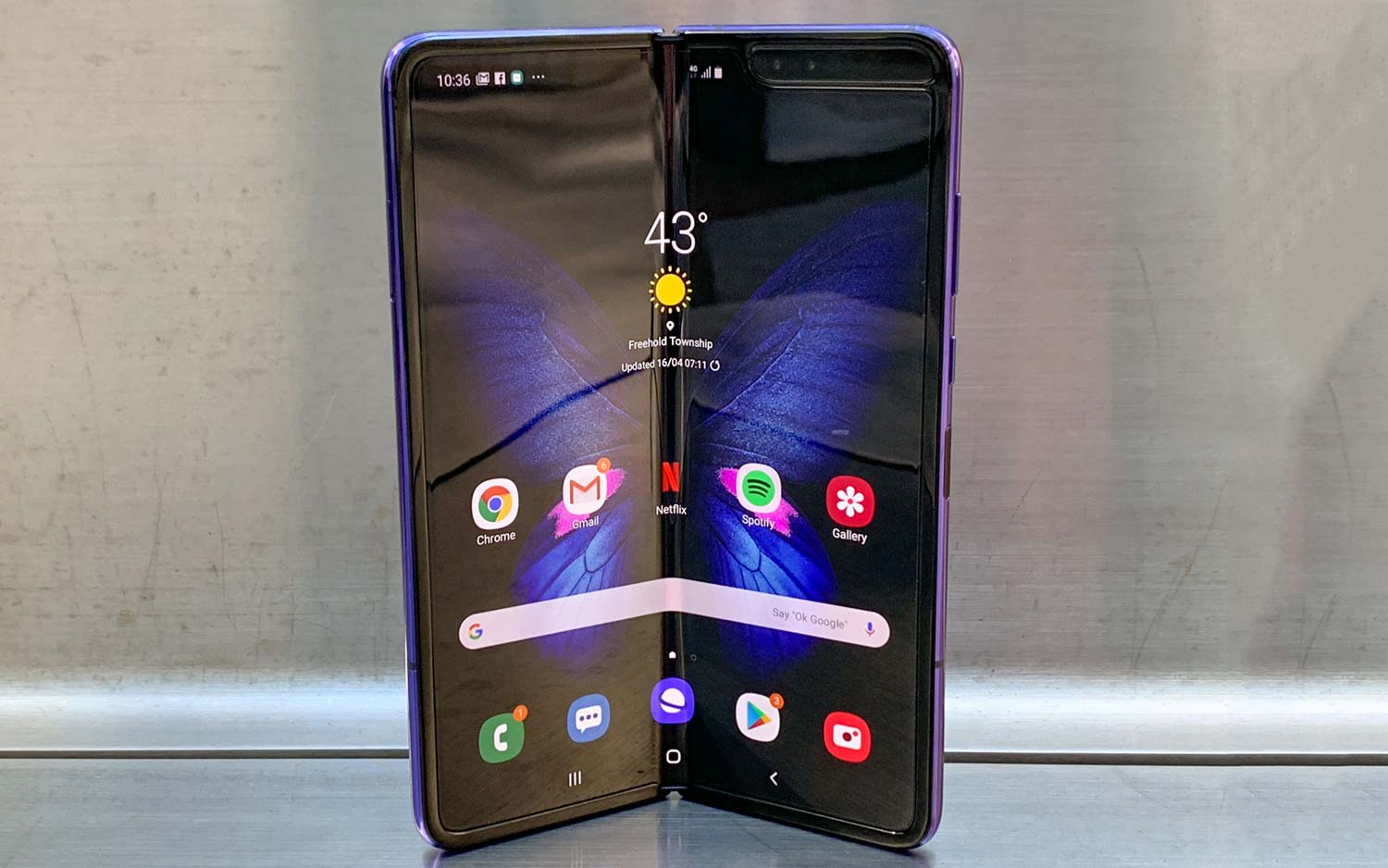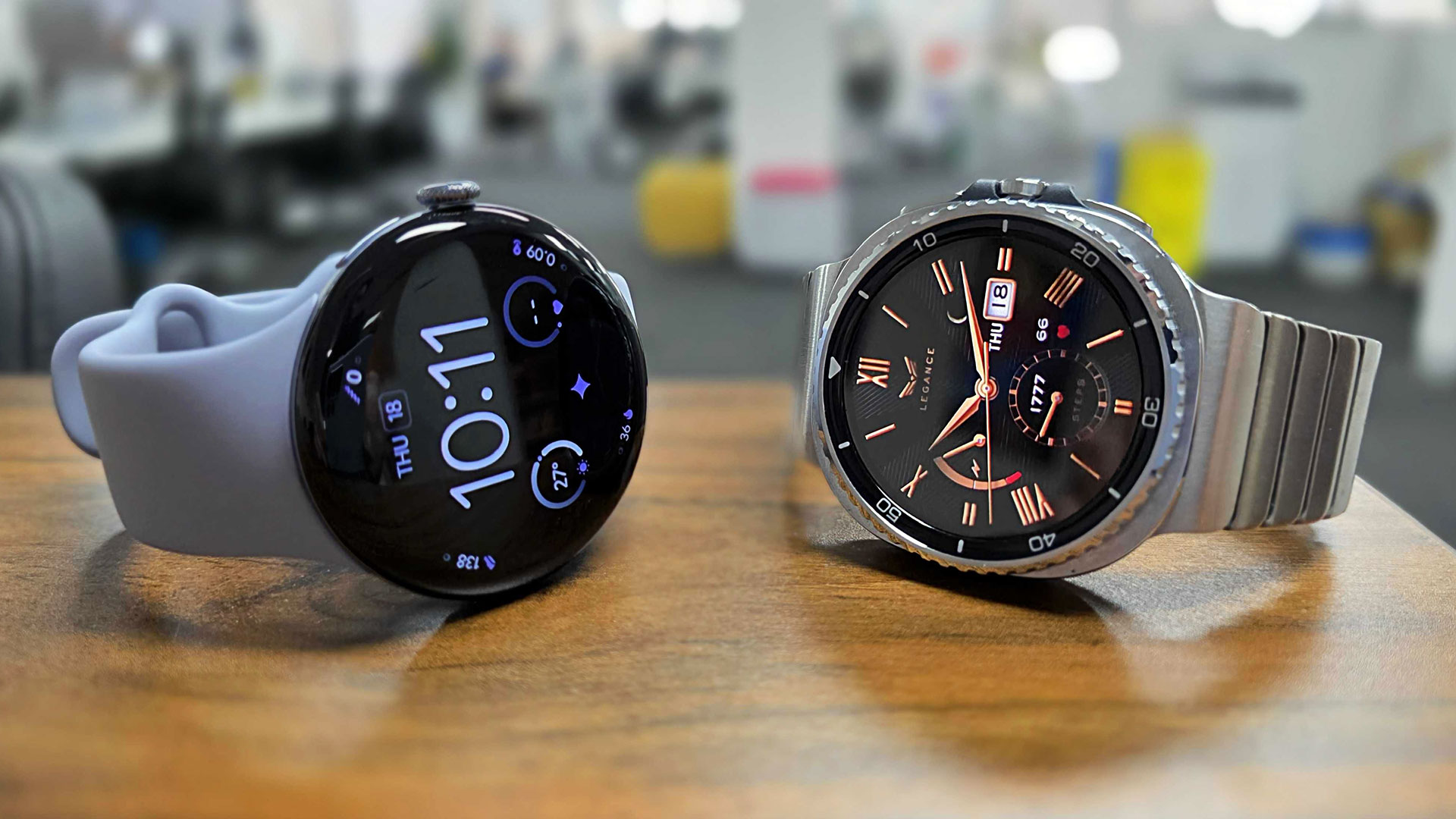Galaxy Fold Fiasco Is Worst Possible Start to Foldable Phone Revolution
The Galaxy Fold breaking is a huge problem for Samsung, but it also casts a shadow over the entire foldable phone category before it gets off the ground.
Updated May 16: Samsung is reportedly strengthening the Galaxy Fold's display by moving the screen's protective shield inside the phone rather than an overlay that can be easily removed. The company is testing the Galaxy Fold on Korean networks and is reportedly planning to release the phone in June.
The $1,980 Galaxy Fold is being positioned as a revolutionary product eight years in the making, but it’s already facing a huge issue just eight days before it hits store shelves.

Several Galaxy Fold units given to reviewers have exhibited severe screen problems. In some cases, the Fold screens have broken and in others they have flickered and/or faded to black. This is the worst possible start for heralding the next big thing in phones.
“On a scale of 1 to 10, this is an 11,” said Ramon Llamas, an analyst for IDC. “Samsung has invested plenty in the development and marketing of the Fold and for negative reports like this to come out so soon do not help its cause. And it’ll make potential customers think twice about getting it now.”
Avi Greengart, lead analyst at Techsponential, agrees that this is a very bad look for the company. “The failure of several Galaxy Fold review units is extremely disconcerting – it certainly puts a damper on the launch of an exciting new product category,” said Greengart.
MORE: Samsung Responds to Galaxy Fold Fails as Shares Fall
Samsung has issued a statement saying that it will inspect the broken or damaged Galaxy Fold units. And it’s not all Samsung’s fault. Sort of. Some reviewers mistakenly removed a layer of protective coating for the main 7.3-inch display, believing that it was just a piece of film that many phones ship with out of the box.
Get instant access to breaking news, the hottest reviews, great deals and helpful tips.
In its statement, Samsung says that “Removing the protective layer or adding adhesives to the main display may cause damage. We will ensure this information is clearly delivered to our customers.”
“The failure of several Galaxy Fold review units is extremely disconcerting – it certainly puts a damper on the launch of an exciting new product category.”— Avi Greengart, lead analyst at Techsponential
That’s great, but the fact that this can happen at all speaks to mediocre product design. Users should not be able to easily remove something that can instantly turn your phone of the future into a $2,000 paperweight.
“Samsung should have anticipated this before distributing review units, but this issue is not fatal,” said Greengart. “It can be corrected with warnings in the box and at retail.”

I don’t think it's fatal for the Galaxy Fold, either, but think of it this way. The vast majority of people had never heard of the Galaxy Fold until yesterday, and it was only because the units were breaking or malfunctioning in reviewers’ hands. This is not the first impression a company wants early adopters to have before a product goes on sale and before a single commercial has aired.
“The optics are bad, and the implied failure rate is astoundingly bad – but only if it translates to actual production units,” said Greengart. “Do the production Folds have these issues at the same rate? What caused the failures? Nobody knows yet.”
Samsung is no stranger to quality control issues, for those who recall the Galaxy Note 7 exploding and catching fire. This is clearly not as bad a problem for the company as that troubled launch, as no one’s life is in danger, but it doesn’t paint a good picture overall.
“At least with the Fold, it hasn’t been launched yet and Samsung can go back and examine what has happened,” said Ramas.
The sad part is that Samsung was willing to take a risk and strived to be first to market, and it backfired. And all of the innovation in the Galaxy Fold is going to be overlooked--at least for now.
MORE: 7 Most Surprising Things About the Galaxy Fold (Good and Bad)
“Pushing the bounds of what is currently available certainly seems to be a focus for Samsung,” said Stephen Baker, an analyst with NPD. “Whether it was pushing the battery in the Note 7 or building this product I think they are willing to take some risks that other brands are not. We should applaud them for that.”
“But it doesn’t speak well to their preparation nor their appreciation of how the tech press was going to view this problem. I view that as a big failing on their part.”
With other foldable phones on the way, including the Huawei Mate X and a foldable Razr phone from Motorola, the Galaxy Fold fiasco could dampen consumers’ enthusiasm for the entire category before it gets off the ground. So that means companies will have to learn from Samsung’s failings--and quickly.
“For those companies, be prepared for the same kind of scrutiny,” said Ramas. “All companies – Samsung included – would do well to reexamine their quality control standards to see if any other bugs like these or others come to the surface.”
Credit: Tom's Guide
Mark Spoonauer is the global editor in chief of Tom's Guide and has covered technology for over 20 years. In addition to overseeing the direction of Tom's Guide, Mark specializes in covering all things mobile, having reviewed dozens of smartphones and other gadgets. He has spoken at key industry events and appears regularly on TV to discuss the latest trends, including Cheddar, Fox Business and other outlets. Mark was previously editor in chief of Laptop Mag, and his work has appeared in Wired, Popular Science and Inc. Follow him on Twitter at @mspoonauer.
-
jlott "Users should not be able to easily remove something that can instantly turn your phone of the future into a $2,000 paperweight."Reply
You mean like the battery, SIM card, or SD Card? Setting that aside, interestingly enough, IT IS IN THE USER MANUAL! "The main screen includes a special protective layer. Peeling off the protective layer or using any adhesives on the main screen, such as screen protectors or stickers, may cause damage." Says it right there in black and white (technically blue and white) under the "Getting Started" notes, page 6. Can you really say that it's Samsung's fault that people aren't reading the manual? -
cuthbert What never seems to be mentioned with these foldable phones is who do they think wants them? I haven't seen a single person who has any interest in this tech. And yet, article after article keeps talking about them. I'm seriously perplexed why they (and the press, I guess as well) keep pushing it as a legit consumer product. It's Google Glass & 3D TV's all over again.Reply -
jawshoeaw Who wants them is the bored technophiles raised on sci fi. rigid glass screens are as much a dinosaur as CRTs.Reply -
Mark Spoonauer Thanks for your comment. How many people read the manual that come with their phone? I would say less than 5 percent. That's why Samsung says it is making the warning much more prominent.Reply
Plus, removing the battery doesn't break your phone. Nor the SIM. Nor the SD card. It's not the same thing. Samsung also hasn't addressed why units are failing where the protective layer was not removed.
jlott said:"Users should not be able to easily remove something that can instantly turn your phone of the future into a $2,000 paperweight."
You mean like the battery, SIM card, or SD Card? Setting that aside, interestingly enough, IT IS IN THE USER MANUAL! "The main screen includes a special protective layer. Peeling off the protective layer or using any adhesives on the main screen, such as screen protectors or stickers, may cause damage." Says it right there in black and white (technically blue and white) under the "Getting Started" notes, page 6. Can you really say that it's Samsung's fault that people aren't reading the manual?

